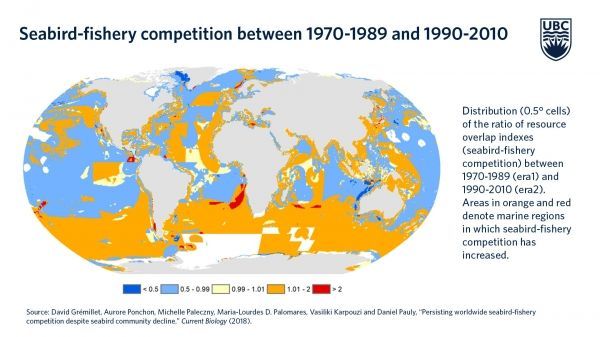Industrial fisheries are starving seabirds like penguins and terns by competing for the same prey sources, new research from the French National Center for Scientific Research in Montpellier and the Sea Around Us initiative at the University of British Columbia has found.
In a study published today in Current Biology, researchers found that annual seabird food consumption decreased from 70 to 57 million tonnes between 1970 and 2010. Meanwhile, fisheries increased their catches of potential seabird prey from an average of 59 million tonnes in the 1970s and 80s to 65 million tonnes per year in recent years.
“Fisheries persist in starving a vanishing seabird community, like a boa tightening its grip on prey,” said David Grémillet, lead author of the study and a researcher at the French National Center for Scientific Research in Montpellier. “Despite the fact that the world’s seabird community is shrinking, the level of competition between seabirds and fisheries remained the same between the 1970s-1980s and 1990s-2000s.”
This diminished food supply is putting seabirds at risk – making them the most threatened bird group – with a 70 per cent community-level population decline in the past seven decades.
Continue reading at University of British Columbia.
Image via University of British Columbia.


